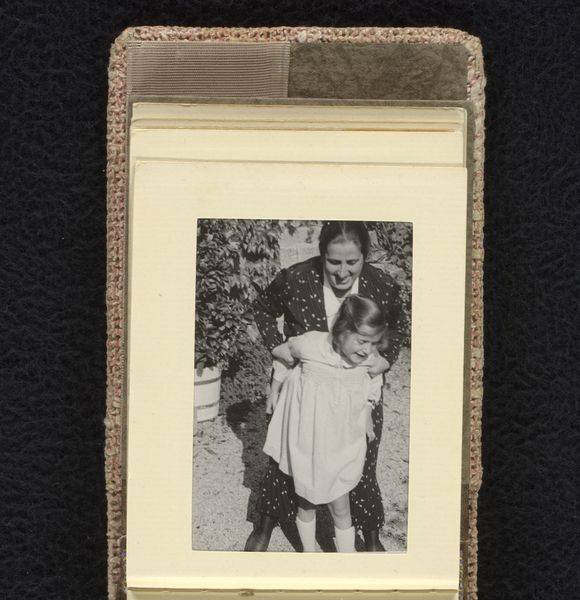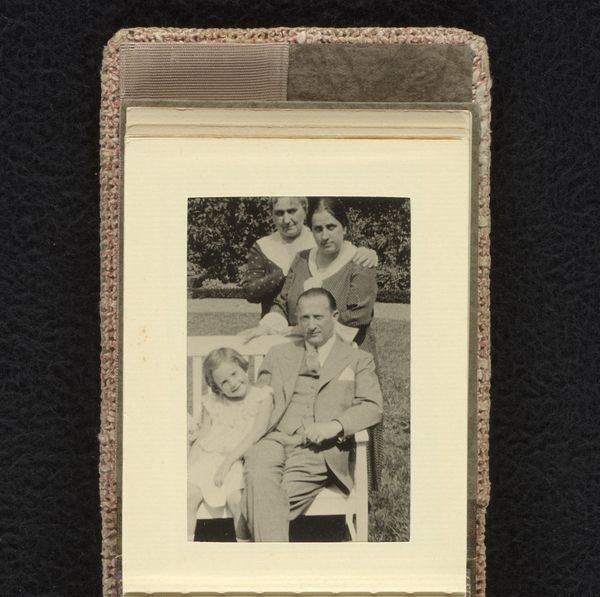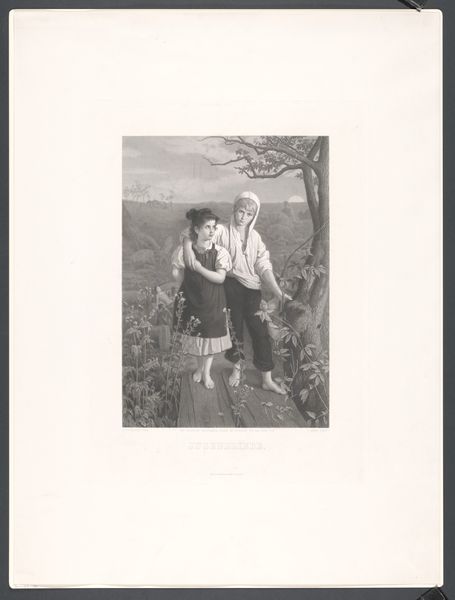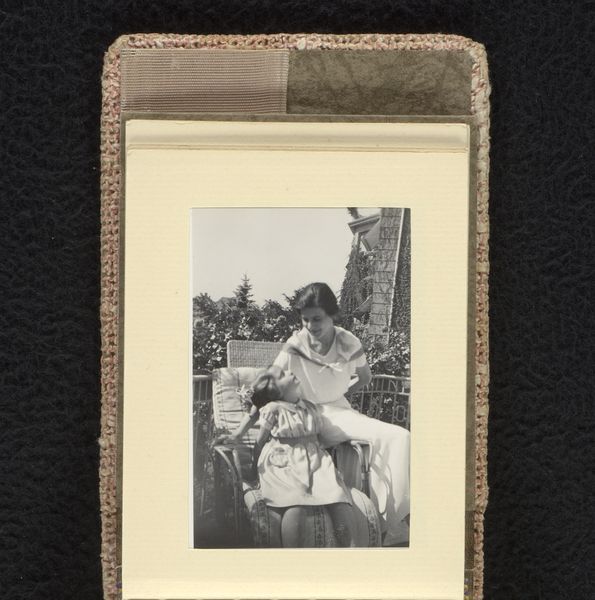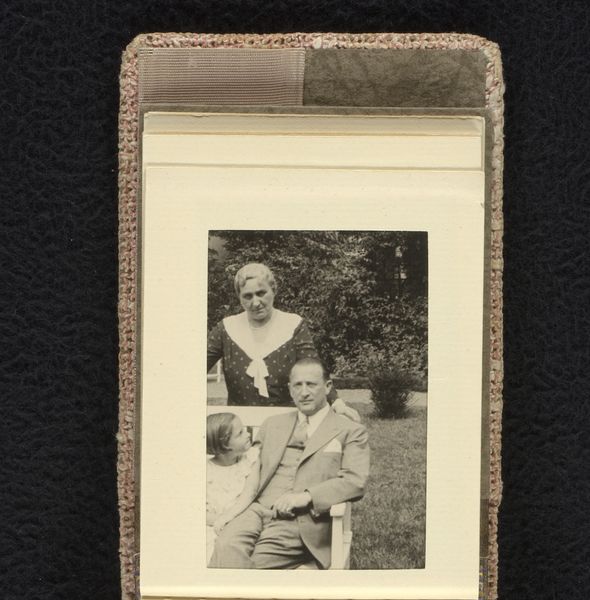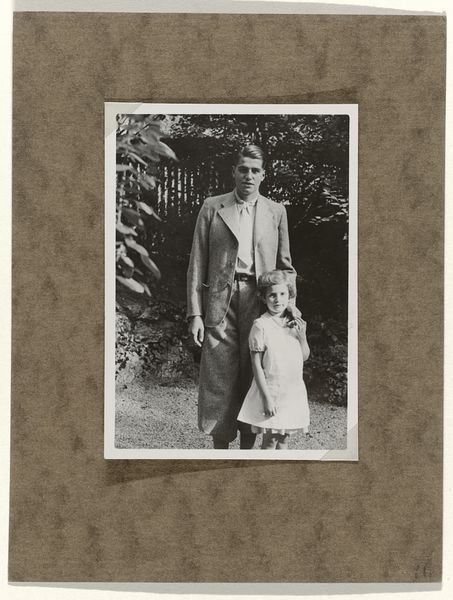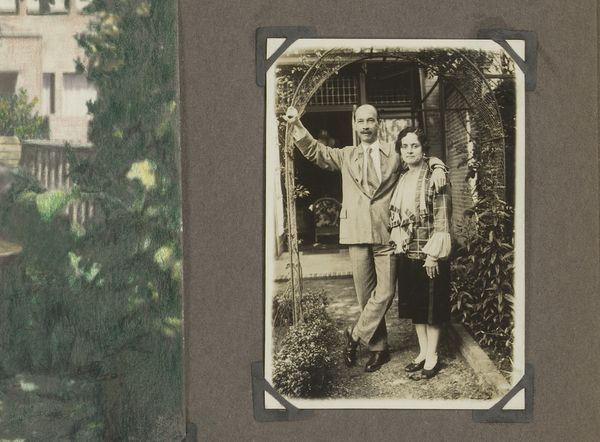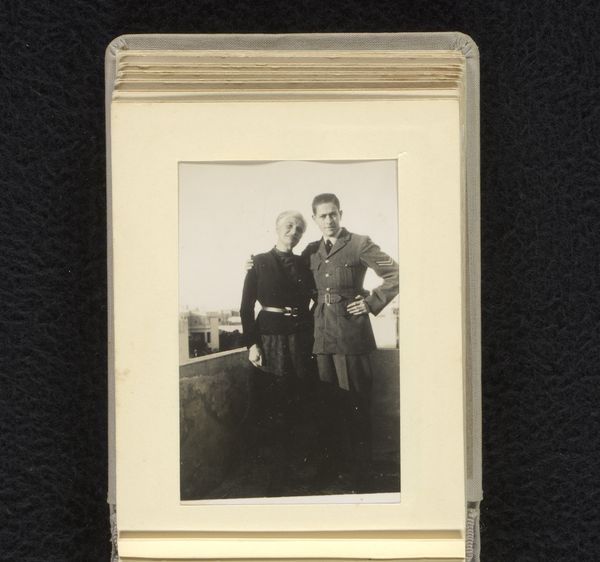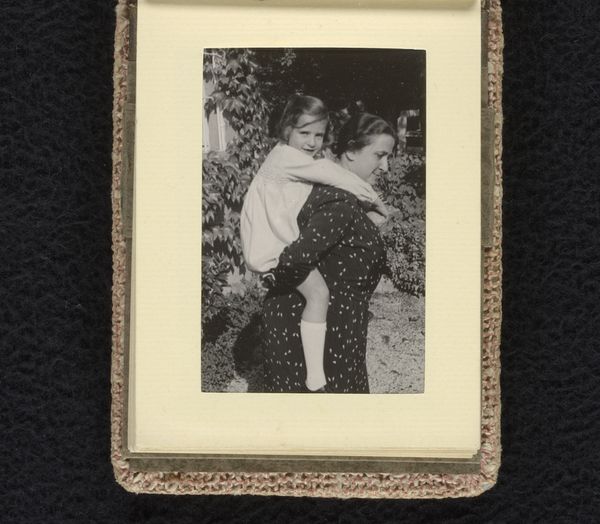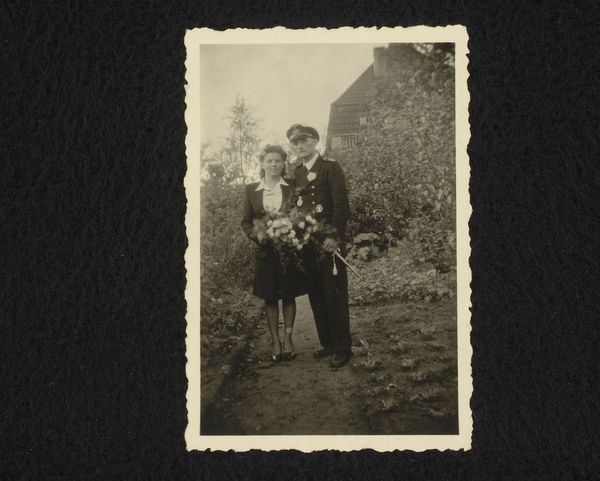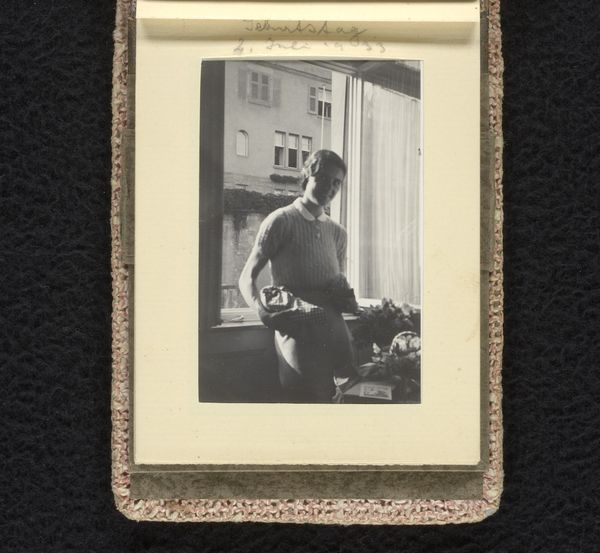
Isabel Wachenheimer en haar neef Klaus Zürndorfer bij de ingang van de woning van de familie Wachenheimer in Stuttgart, augustus 1934 1934 - 1938
0:00
0:00
photography, gelatin-silver-print
#
portrait
#
photography
#
historical photography
#
gelatin-silver-print
Dimensions: height 90 mm, width 65 mm
Copyright: Rijks Museum: Open Domain
Editor: This gelatin silver print, taken between 1934 and 1938, shows Isabel Wachenheimer and her nephew Klaus Zürndorfer at the entrance of the Wachenheimer family home in Stuttgart. There's something so ordinary about this image – a sweet family moment, captured in time. What catches your eye when you look at this photograph? Curator: Beyond its surface, this seemingly simple photograph speaks volumes about the historical context. Taking place in the 1930s in Stuttgart, Germany, this portrait exists under the shadow of the rise of Nazism. It urges us to ask: who were the Wachenheimers? What was their experience of this era? The act of taking a family photograph becomes a potent declaration of identity and resistance amidst increasing persecution. What does the act of documenting this moment signify to you? Editor: I hadn't considered that. Seeing it that way, it’s more than just a snapshot, it feels like a quiet act of defiance, a way of preserving their existence. Curator: Precisely. Think about how the framing centers on the doorway. Is this an entry to safety and familial comfort or is it overshadowed with danger? And the fact that this photograph even survived... the image takes on an activist role by standing against erasure. Where does this photograph position itself in conversations around power and oppression? Editor: This really changes my understanding. It’s amazing how a photograph can contain so much history and speak to larger themes of identity and resistance. Curator: Exactly. By questioning the narrative embedded in this ordinary photograph, it provides a rich tableau for thinking about identity and the fragility of belonging. Editor: I will never look at historical photographs in the same way again! Thank you for revealing those hidden depths.
Comments
No comments
Be the first to comment and join the conversation on the ultimate creative platform.
